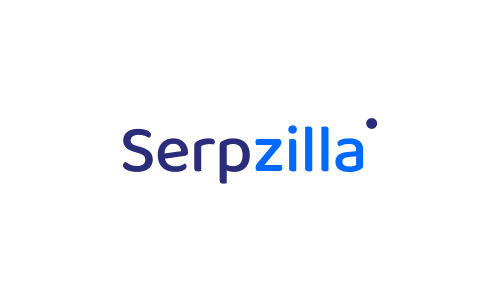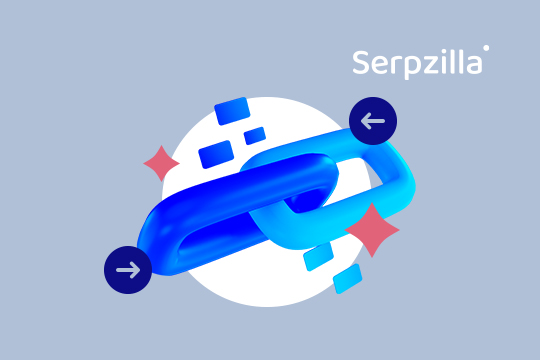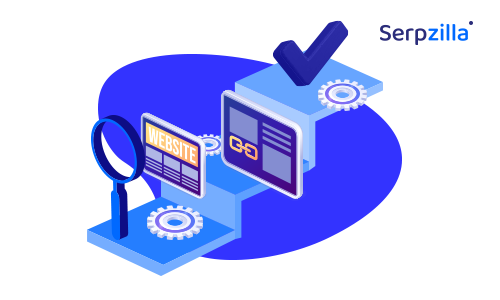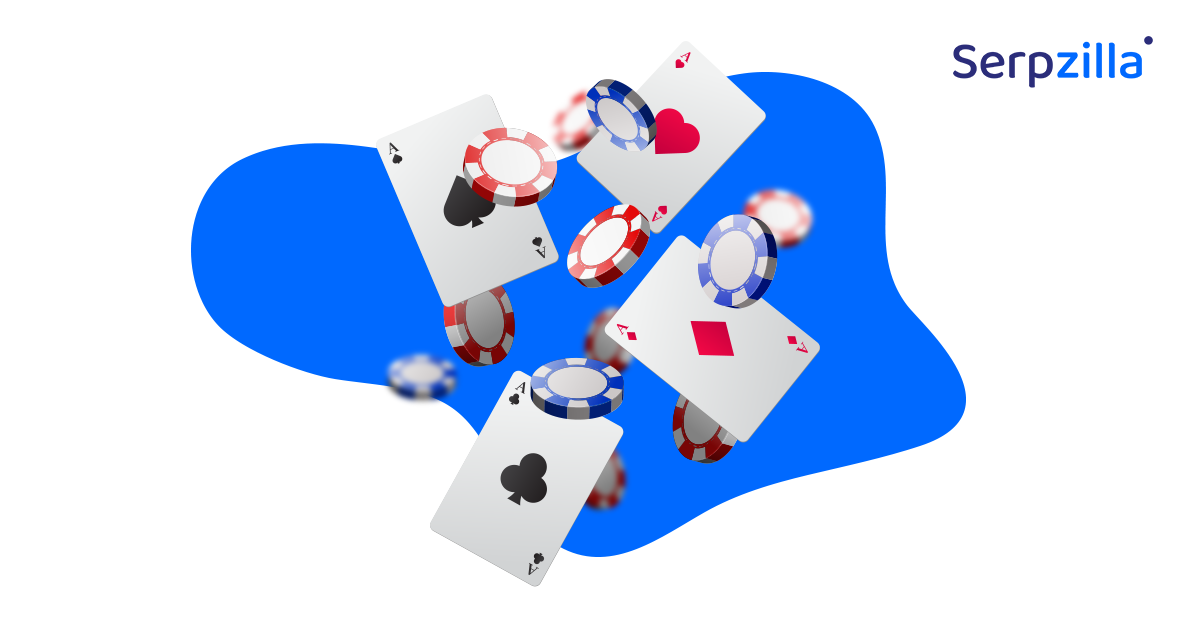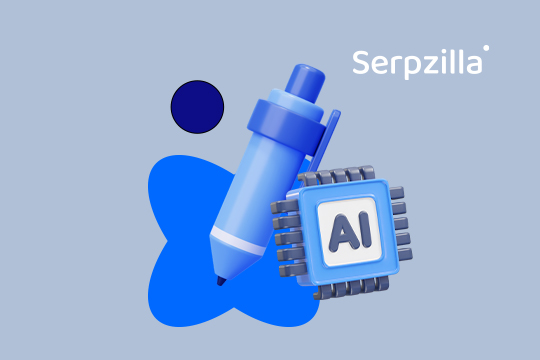Imagine you’ve just published a blog post after hours of work, yet it generated zero backlinks. Meanwhile, your competitor posted a hot listicle or a new opinion piece and attracted hundreds of links overnight. Where’s the justice? The thing is, nearly 97% of online content gets no traffic at all, and the lack of quality backlinks is a key factor. If you’re part of this statistic, link bait can become the life-saver for your SEO efforts.
In this detailed article, you’ll learn everything you need to know about link bait. You’ll also discover how to do link baiting in SEO for maximum visibility and efficient link-building.
What Is Link Bait?
Link bait (also spelled linkbait) is any online content that’s specifically designed to attract backlinks. The goal is to provide so much value or generate so much interest that people can’t help but reference and share it.
Don’t confuse linkbait with clickbait, though. Linkbaiting content can be genuinely useful and entertaining. Unlike spammy link-building tactics, this approach earns links naturally.
Link bait plays a major role in a link-building strategy but flips the traditional approach. You literally let backlinks flow to you from a diverse range of authoritative, organic sources naturally.
Here are some examples of link bait:
- A viral infographic that presents information in a digestible, visual way and is easy to share
- A free tool that helps users solve a real problem (think online calculators, simple tests, etc.)
- A reliable study on industry trends with valuable insights
- An expert blog post with a unique perspective
- A useful listicle of tools, resources, products (or anything else, really) in your niche
These types of content work as link bait because they simply tap into what people naturally want to consume and share. They provide value, evoke emotions, spark debate — you name it.
Why Is Link Bait Important for SEO?
It’s no secret that backlinks remain one of Google’s top ranking factors. That’s why the more high-quality, relevant sites link to your content, the better your chances of climbing the SERPs. Link bait makes this process a whole lot easier. You can build your “passive backlink income” by publishing content that people will reference without any incentives on your part.
Linkbaiting, when done right, will cover all the bases of effective SEO, including:
- Increasing your site’s domain authority
- Driving sustainable traffic
- Improving your visibility in organic search
Don’t just take our word for it — endless case studies prove that link baiting is an SEO goldmine.
Last year, organic marketing service Buffer published a blog post titled “10 Simple Things You Can Do Today That Will Make You Happier, Backed By Science.” The article gained over 56,000 likes, 6,800 tweets, and 200+ backlinks from unique domains. There were no special tricks involved — the piece simply struck the right balance of emotion, value, and scientific credibility. This blend made the post irresistible to readers and turned them into active sharers. It also earned 2+ million links from WordPress.com alone.
Big global corporations know the value of link baits, too. Spotify’s annual Wrapped campaign is one of the best link bait examples. It generates phenomenal user engagement and media coverage every year. Personalized, visually appealing summaries encourage users to share their listening habits and lead to a spike in backlinks for increased brand visibility. In 2024, Spotify reported tens of millions of Wrapped shares by social media users (including major celebs) and saw a 40% increase in app engagement during the campaign week alone.
And if you think linkbaiting is a modern SEO strategy, here’s a surprising fact: it’s not! Back in 2010, WordStream published a data-backed piece with a catchy news hook and ended up getting a backlink from The New York Times and Politico. This smart link bait move did wonders for their SEO: referred traffic quadrupled, with thousands of pageviews in just a couple of hours.
How Link Bait Works: The Psychology Behind Viral Content
As you can see from the link bait examples above, it’s a powerful SEO approach. The mechanism behind linkbaiting and its effectiveness, however, is very simple: it’s based on psychological drivers that make us want to click and share. It also plays with perception, timing, and emotion. Here’s how:
- The reward-for-effort ratio. When content offers a lot of value with little effort (like a quick-read stat roundup or a plug-and-play tool), our brains go, “Yes, please.” We’re wired to chase high reward for low input.
- Pattern disruption. Most of what we scroll past feels the same. Link bait that breaks patterns (visually, tonally, or structurally) snaps our attention back.
- Emotional triggers. Content that sparks joy, anger, nostalgia, or FOMO travels faster. Emotions increase the likelihood of resharing.
- Identity affirmation. People love to share content that reflects their values, interests, or sense of humor. Great link bait makes users think “Wow, this is so me” without actually saying it.
The bottom line is that link bait works because it speaks to our minds, emotions, and egos all at once. And of course, it aligns with how search engines evaluate content. When people link to your content naturally, it sends strong authority signals to Google. As a result, you get higher rankings, increased crawl frequency, and other pages on your site usually perform better too.
Pro tip: To maximize the SEO benefits of link baiting techniques, you can support this initiative with high-authority backlinks. You can easily achieve this by buying relevant, dofollow links from trusted sites. Platforms like Serpzilla make it easier to find and purchase those links without manual outreach or negotiating with individual site owners. When done right, this added support can amplify your visibility and push your rankings even higher.
Use Serpzilla to strengthen your linkbaiting content with quality dofollow links purchased from trusted sites.
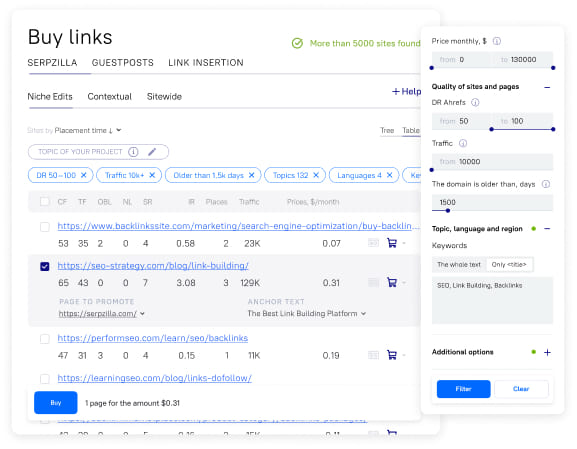
The 6 Best Types of Link Bait (With Examples)
You’ve already seen a couple of examples of link baiting campaigns that made waves, mentioned earlier in this article. Now, let’s break it down and take a closer look at the most effective content formats people genuinely want to link to.
Below, you’ll find six proven types of link bait content that consistently perform well, with examples. Each type has its own strategic value and viral potential.
1. Data-driven research, studies, and white papers
It’s really simple: original research is irresistible because it’s authoritative and valuable. It gives other sites something to cite that they can’t get anywhere else. This content builds credibility almost on autopilot — people love linking to stats and charts that support their arguments.
Example: Serpzilla’s 2024 global SEO research, “Why Automation is Key to the Future Link Building,” is still frequently cited across blogs, webinars, and social media, earning hundreds of high-authority backlinks. Regular users, experts, and brands alike use our insights to highlight emerging trends or support their own claims.
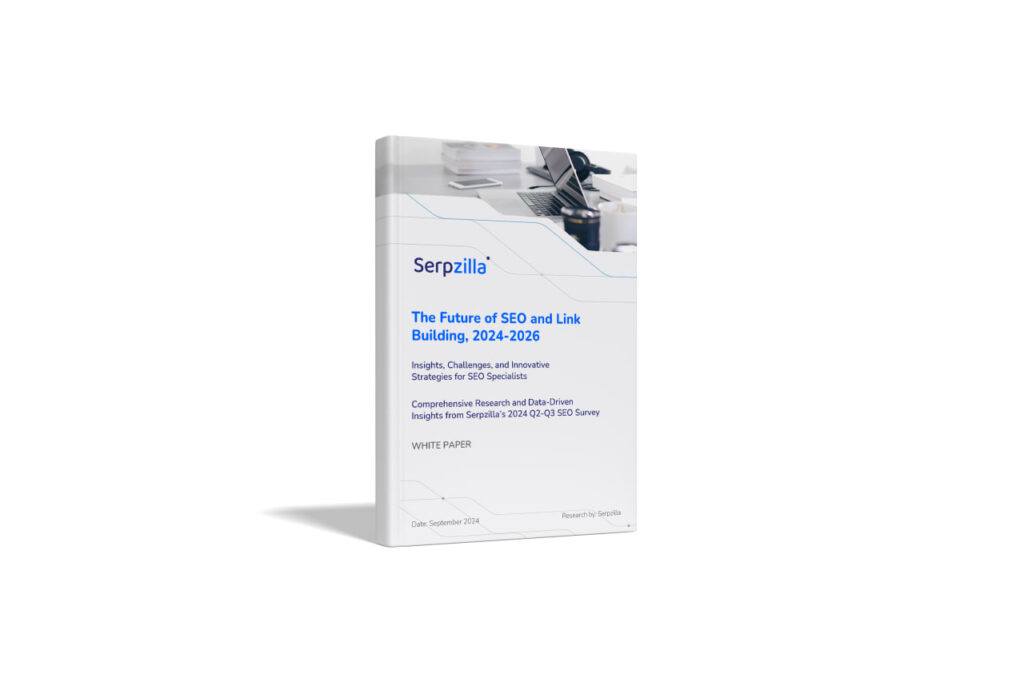
2. Free tools
Free tools are more than content. You can think of them as clickable assets that deliver specific practical value to users. These tools can include:
- Cost or ROI calculators
- SEO checkers and graders
- Quizzes or assessments
- Generators (e.g., slogan generators, meme generators, etc.)
- Interactive templates
The best thing about free tools is that they have staying power. Since this type of linkbait solves evergreen problems, tools and calculators keep earning backlinks long after you published them.
Example: iSpring’s eLearning ROI calculator is a great bait link. It helps teams and companies estimate the return on investment of their training programs in just a few clicks. The calculator delivers immediate, personalized value and supports data-driven decision-making — an excellent backlink magnet. L&D professionals, industry blogs, and opinion leaders on LinkedIn often reference this tool.
3. Infographics and visual content
Visuals always win over text-based content because they’re easy to digest and highly shareable. Besides, a well-designed visual can travel farther than a blog post. People often repost infographics, charts, and illustrations or embed them in presentations.
On top of that, visuals work well across platforms and look great when shared on social media, where visual-first content gets more engagement by default. That’s what makes it powerful linkbait material that earns you those valuable backlinks.
Example: Nadieh Bremer’s and Shirley Wu’s infographic series “Data Sketches” is a phenomenal project that turns raw datasets into stunning visualizations. Each installment of the project earned hundreds of backlinks from design blogs, tech media, and educators. From diversity in tech to personal Spotify habits, these infographics cater to both niche audiences and broader public trends. That’s the perfect recipe for high shareability and building authority.
4. Controversial and opinion-based content
Who doesn’t love a little bit of drama? Controversial content creates tension, sparks debate, and ultimately drives a lot of traffic to your web page. In this type of content, your job is to give your audience something to react to: agree, disagree, or even question their own views.
Link-worthy controversial content is really diverse and includes pieces that:
- Challenge a popular belief in a given industry (best done when backed with logic or data)
- Feature a contrarian opinion on a trending topic
- Call out outdated practices
- Criticize social, business, or cultural phenomena from an authentic perspective
Example: If you want to create link baits built around controversy, take inspiration from opinionated columnists. A recent Guardian piece “So Katy Perry went to space. Wasn’t there anyone else we could have sent?” by Zoe Williams took a tongue-in-cheek jab at celebrity PR campaigns, which tapped into public fatigue around influencer culture. It sparked heated discussion online and people keep sharing it to add their own voice to the debate.
5. “Ultimate” guides and evergreen resources
Whenever a piece of content is labeled “ultimate,” chances are you’re in for a deep dive with a lot of value. These long-form resources work because they promise (and usually deliver) complete coverage of a topic that will be relevant for a long time.
They work so well as bait links because sharing an ultimate guide is often easier than creating a new one, especially for busy writers, marketers, and educators. In other words, this type of content is an excellent shareable reference point. You don’t need to explore a broad, complex topic in your ultimate guide. Niche subjects work just as well, and sometimes they perform better because there’s less competition.
Example: Shopify has a series of highly detailed, evergreen guides on all things business. From writing a business plan to starting an online store, the eCommerce platform gives its audience simple, actionable advice on making their business idea come to life. The guides are packed with real examples, visuals, and templates — additional assets that increase content shareability and earn even more quality backlinks over time.
6. Viral rankings and lists
Top-10 lists, rankings, or “best of” blog posts are highly clickable because they promise value in a compact format. On top of that, different styles of lists cater to different sharing behaviors and linking incentives. Tech bloggers might share a tools roundup, lifestyle creators prefer influencer lists, and educators love resource compilations — you get the idea.
Some of the most effective list formats for earning backlinks include:
- Influencer roundups
- Tool or product comparisons
- Resource collections
- Event recaps or award-style lists
Example: Our verified listicle of 240 fresh dofollow backlink sites is not just a useful resource for enhancing your SEO efforts but a great backlink magnet as well. It’s already earned hundreds of shares on social media and other web pages — people love bookmarking and linking to practical resources they can come back to later.
How to Create Link Bait That Gets Results: A Step-by-Step Guide
So, how do you go from theory to practice and create content that earns you quality backlinks? Here’s how to do link baiting in SEO in four simple steps, each complete with an actionable pro tip to help you stand out from competitors:
1. Pick an in-demand topic
Your link magnet is only as strong as the topic it’s built on. Naturally, SEO basics still apply when you pick your thematic focus: prioritize high-volume, evergreen keywords with informational intent.
However, don’t just stop at that. While you can use SEO tools to chase the most competitive head terms, it’s also a good idea to zoom in on high-intent, underserved queries. For example, you can look for:
- Keywords that rank lots of forums. It’s a sign that no one’s delivered a truly satisfying answer yet.
- SERPs with few visual elements. It means you’ll have room to offer additional tools, infographics, or charts.
- Topics with a high ratio of backlinks to top-performing pages.
Pro-tip: look where others are not looking. Instead of just relying on keyword tools, dig through Reddit threads, support forums, LinkedIn comment sections, or webinar Q&As. These are goldmines for unfiltered, real-world questions and frustrations. That’s exactly the kind of things people search for and link to when they find helpful answers or info.
2. Choose your link bait content type
You can browse the list of the winning linkbait content formats in this article and go for the one that makes the most sense for your topic or platform. To make the decision-making process easier, ask yourself these simple questions:
- Does this topic need visual aids? → Consider an infographic or interactive chart.
- Are people comparing options? → Go for a ranked list or head-to-head comparison.
- Is it data-heavy? → Turn it into original research or a stats roundup.
- Does it help solve a recurring pain point? → Build a tool, calculator, or checklist.
Pro tip: think hook before content. SEO content creators often write first, then figure out how to market it. But you can flip that. Think about what would make someone stop scrolling and start linking to your piece. It can be a surprising stat, a bold claim, a niche angle no one has tackled — the list goes on and on. Nail your hook before you build around it and your backlink gains will grow.
3. Create unique, useful content
Ideally, your content won’t rehash what’s already out there in the top five Google results. Yes, it’s a simple route, but it won’t land you many quality backlinks — there’s just too much competition. Instead, do your best to add extra value or show your audience something they didn’t realize they needed.
You can:
- Include lesser-known use cases or applications that others overlook
- Show unique data or workflows from your team or projects
- Offer something users can copy/paste, download, or use immediately
Pro tip: rather than asking “What would rank?”, ask “What would someone screenshot in a presentation?” or “What would someone quote in a Slack debate?” That’s the kind of content that earns links.
4. Place your linkbait content strategically
Now it’s time to give your content the visibility it deserves. Yes, organic discovery can work, but thinking and acting strategically will bring better results.
Identify where your target audience hangs out and simply go there. It can be:
- online communities and social media
- industry newsletters and targeted email lists
- curated content hubs, etc.
The idea is to get your content in front of creators and communities that have the power to amplify it. A well-placed link in a roundup or an embedded reference in a newsletter can earn more links than a hundred cold emails.
Pro tip: remember that your link bait is a long-term asset. Add it to internal linking strategies, plan to mention it in future guest posts, and cite it in journalist pitches. You can also use Google Search Console to see newly acquired backlinks and then follow up to build new relationships off this momentum.
How to Promote Your Link Bait for Maximum Reach
Alright, you’ve created and placed your linkbaiting piece, and it does get noticed — but you want to maximize its reach. The thing is, promotion isn’t a one-time task. The difference between content that lands a few backlinks and content that dominates a niche often comes down to ongoing distribution. Try these four strategies to earn even more backlinks with your quality bait:
1. Track who’s already linking to similar content and replace it
If your content solves the same problem or covers the same topic, reach out with a better, fresher alternative. It’s easier than you might think: use SEO tracking tools to find articles or other resources that link to outdated or generic resources. Then pitch yours as the smarter upgrade.
This tactic is very effective because you’re tapping into the intent that’s already there. The site owners have already linked to content like yours before, so the chances of them doing it again (with a better resource) are higher than usual cold pitching.
2. Embed your linkbait into partner content
Collaborate with partners or clients who are already producing content. Find opportunities to weave your link bait in as a relevant, helpful resource in guest posts, webinars, or podcast show notes.
For example, if a client is writing a guest post about trends in your niche, suggest adding your data study as a cited source. Or if a partner is launching a webinar, offer a free tool or stat roundup they can mention. You can even bake link bait into co-marketing collateral, onboarding materials, or joint email sequences — possibilities are nearly endless.
3. Buy backlinks strategically
Sometimes, no matter how great your content is, it just doesn’t get the traction it deserves. If that’s the case with your link bait, you can solve the problem by buying backlinks that give it a little push. Besides, this approach will help you keep the momentum going and continue attracting quality traffic.
Platforms like Serpzilla help you identify high-quality, relevant websites where your content can earn dofollow backlinks. These aren’t random placements but contextual, topic-matching links that reinforce your authority and help search engines trust your content.
Final word
Here’s the key takeaway: truly results-driven link baiting combines strategic SEO thinking with genuinely catering to audience interests and needs. You see real SEO impact when you blend value, originality, and smart promotion.
If you want to maximize results, consider your link bait content a continuous investment. Update and repurpose it, re-promote it, and support it with paid links if needed. Above all, keep testing what actually earns links in your niche.



